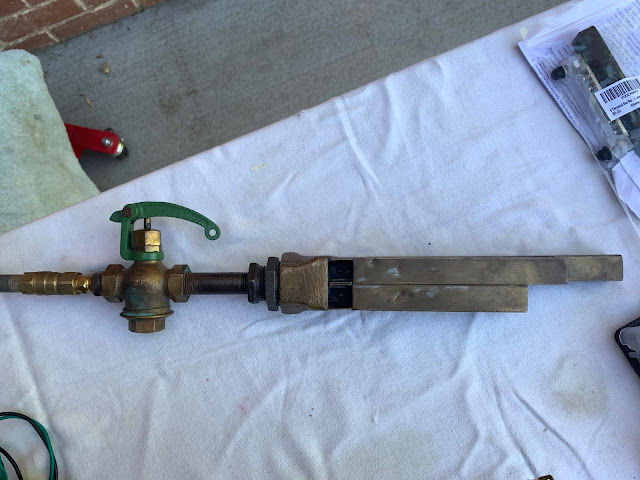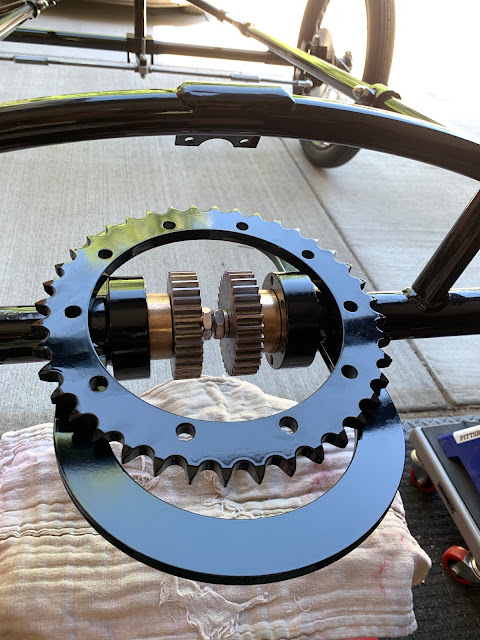Disc Brakes - The Caliper Mounting
STW provides 4 Disc Calipers. Each has a fitting that is dual purpose, Banjo and Bleed. They tell you to put these in the upper hole, the lower hole is plugged with a grub screw that seats against a steel ball.
When I spoke with Grier, he told me that his calipers came in a similar manner, but his dual fitting was in the lower hole.
To make things more interesting, his instructions said that an additional bleed fitting would be coming, but never did. My instructions do not mention the additional fitting.
Minor confusion, and a question or two about hydraulic-dynamics. The brake fluid only has one way in, and you would need to loosen the grub screw to get all the air out. That would make a mess. Grier told me just that, and further said that he was still dealing with "mushy brakes".
So I decided to do a few things on this. And I may be wrong, but here goes:
1. I put the "input fitting" that carries the fluid, on the lower ports.
2. I purchased (4) 10MM x 1 Brake Bleed Screws from our good friends at Amazon.
3. I purchased 2 bottles of DOT 5 Brake fluid. Since the system was empty and I wanted to avoid the chemical issues with DOT 3, 4, 5.1 fluid, I went for 5.
4. I got DIY one-man brake bleed kit.
Now, when I mounted the calipers, I noticed that the front ones were 1 or 2mm off center. I went back and cleaned off the little mounting protrusions on the mounts, removing all powder coating. Still off a little, rubbing on one side.
I purchased some 1mm thrust washers from McMaster-Carr, another favorite place, and used them to shim out the wheel assembly. Both wheels turn easily.
Before cleaning things up, slight tilt on the caliper. The inlet fitting is still on the top hole.
After cleaning the coating off the mounting nubs and adding a shim, we have a happy wheel.
The actual piping will take place after the frame is assembled.
Here is the caliper and ports in final configuration:
Stand by for the next posting.
Thanks for reading,





















































